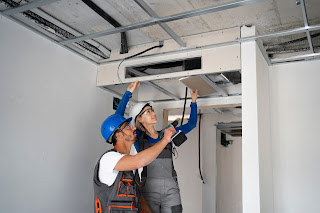What does an AV system do?
An AV system, or audio visual system, refers to an electronic facility installed in homes or commercial buildings to distribute audio and video content across various devices. With advanced hardware and software capabilities, AV systems have become an integral part of modern living and workspaces. This article will discuss what an AV system encompasses and the audio visual(av) installer tools key functions.
Components of an AV system
Before understanding what an AV system does, it is important to go over the main components that make up such a system. The key components include:
Source Devices
Cable/Satellite Box
Blu-ray/DVD Player
Streaming Media Player
Game Console
Camcorder
Smartphone/Tablet
Displays
TV
Projector
Monitor
Amplifiers
Receiver
Integrated Amplifier
Power Amplifier
Speakers
Floor Standing Speakers
Bookshelf Speakers
In-Wall Speakers
Outdoor Speakers
Surround Sound Speakers
Cables and Connectors
HDMI Cables
RCA Cables
Speaker Wire
USB Cables
Ethernet Cables
Other Components
Universal Remote
Microphones
Mounts and Stands
Surround Sound Processor
AV Receiver
Distribution of Audio and Video Content
One of the primary functions of an AV system is to distribute audio and video content from various source devices like a Blu-ray player, streaming box, gaming console, etc. to multiple displays and speakers installed in the home.
An AV receiver acts as the central hub that receives audio/video signals from the sources via HDMI or analog connections. It then distributes the signals to the attached displays like TVs using HDMI cables and to the speakers with the help of speaker wire.
With features like multi-room playback, an AV system allows enjoying the same content on different displays simultaneously. For instance, one can watch a movie on the living room TV while also listening to its audio on outdoor speakers.
Whole Home Coverage with Wired and Wireless Options
Advanced AV systems provide whole home coverage with content accessible on any TV or speaker in the house wirelessly. Wireless solutions like Bluetooth and WiFi-enabled speakers allow playing audio in any room without the hassle of running cables.
On the other hand, wired options continue delivering lossless audio quality with solutions like in-wall and in-ceiling speakers. An AV installer uses tools like wire fishers and power drills to neatly run speaker wire behind walls during installation for a seamless whole home setup.
Control and Automation
Modern AV systems come with sophisticated remote controls and apps for operational convenience. A universal remote consolidates control of all devices into a single interface. Apps enable controlling the system remotely from any smartphone or tablet.
Additionally, integration with smart home platforms provides advanced automation capabilities. Homeowners can automate tasks like turning the system on when they reach home, adjusting volume based on ambient noise levels with the help ofAV installer tools and partnerships.
Enhanced Audio Experiences
With the help of surround sound processors and multiple speakers, an AV system delivers immersive surround sound. It creates the illusion of sound coming from all directions to closely mimic the actual cinema experience at home.
Dedicated subwoofers enhance the low frequencies, taking bass response to a whole new level. Dolby Atmos takes this a step further by placing speakers in the ceiling for true 3D overhead sound. Audiophiles also prefer separate multi-channel amplifiers and speakers for hi-fi playback.
Flexible Configuration Options
AV installers offer flexible configuration options to suit different viewing scenarios and installer tools help assess a home's wiring and connectivity requirements. For the living room, a projector with a motorized screen delivers a true theater feel.
Bookshelf speakers placed around a PC setup deliver accurate soundstaging for gaming. Outdoor installations withstand the elements with weatherproof speakers. In-wall/ceiling speakers provide discreet sound throughout the house. With network media players, the whole system acts as a smart multi-room music system as well.
Integration Capabilities
Modern AV systems integrate tightly with smart home devices and services for a truly connected experience. Voice assistants can be used to control playback with simple voice commands.
Security cameras and doorbells display video feeds on the home theater TV. Lighting scenes and thermostats also sync with media playback for an ambience enhancement. Home labs leverage the AV system to calibrate and test speakers with audio signal generator playback.
Application in Commercial Spaces
Along with residential installations, pro AV systems designed for commercial applications take audio and video distribution to an altogether new level. Conferencing systems, digital signage, and background music solutions enhance the user experience in offices, hotels, restaurants and more. Stadia leverage intricate delay towers and arrays of speakers to create atmosphere. Auditoriums install advanced arrays of speakers powered by multi-channel amplifiers to cover hundreds of seats with pristine sound. With integrated control systems, commercial AV truly shines in centralized management of complex operations.
Conclusion
In conclusion, an AV system brings all the different components of home entertainment under one unified ecosystem. It distributes audio and video content seamlessly across the home for an immersive experience. With whole home coverage, enhanced audio quality, flexible configurations and tight integration capabilities, AV systems have become an indispensable part of modern lifestyles. Advanced commercial AV takes these functionalities to amplify operations in professional environments. Overall, an AV system aims to beautifully merge technology with user experience for truly engaging multimedia everywhere.



Comments
Post a Comment